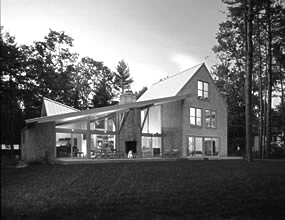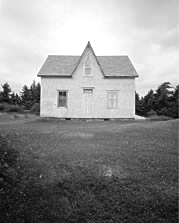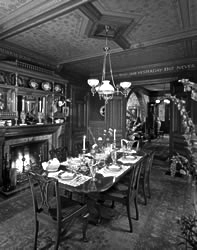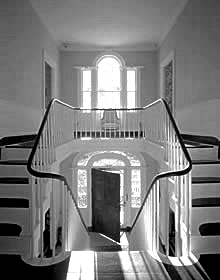|
|
|
|
|
|

|

|
|
|
|
|
There are times, however, when additional lighting must be done, either to fill in shadows that are too dark, or to light entire areas. At those times, it is important to know how to use the lights so the image appears to be lit naturally, and not overdone. My lighting is extremely simple, comparatively lightweight, and cheap. I use only hot lights, and do not even own strobes. I carry about 15 10' aluminum reflectors, with stands and gobos. I also have some smaller units that fit nicely in tight spaces, with stands that enable them to be placed close to the floor. In addition to these, I have a Lowell quartz kit with four 1000-watt lights for those times when I need a lot of juice. I can't remember the last time they were used, thank goodness. I carry lots of bulbs for all these lights-everything from 15 watts to 500-watt floods, in both blue and clear versions. And, of course, all the paraphernalia that goes with lighting-cords, gaff tape, clamps, dimmers, etc. I am also using collapsible, PhotoFlex type reflectors more frequently. I really like these because they are so easy to use, and can be conveniently carried along with the camera equipment. Very handy. Developing a shooting and lighting style is a lifelong process of refining skills, paying more and more attention to the little things, and learning better ways or working and seeing. This narrative reflects where I am today, but I still have a lot to learn. Technical Notes Private Residence, Yarmouth, Maine. This shot illustrates a lighting situation that is unusual, and one that I try to avoid because it represents so much work. It is a dusk shot that required both interior and exterior lighting. This view was the most important exterior shot of the whole assignment, but the light was not right until dusk because we wanted to show the transparency of the house. We went through the house and placed lights in each room, anticipating the need for them when the time came to shoot. We used 100-watt clear bulbs. As the time came, I realized that the house itself was getting too dark and we would need to (quickly) add some lights to bring up the level on the exterior. We rushed to get the lights in place-three units with blue 100-watt bulbs to more closely match the evening light. One was placed on the far right of the frame, lighting the large part of the house. One was used on the far left, lighting that end of the building, and the other was directed at the porch/fireplace in the center of the frame. The lights are hardly noticeable, but they make a big difference in the final image. Without them, the outside of the house would have been too dark, and the image itself too contrasty. We shot the scene through a Nikkor 90mm f/4.5 lens on 4x5 daylight Ektachrome 64 and Tri-X. I believe I added a .10 blue filter at the last minute. Exposure time for the Ektachrome was about 60 seconds at f/16 and the Tri-X was exposed for about 15-20 seconds. Ektachrome was processed normally but Tri-X had a slight reduction in development time. The print was made on Ilford Multigrade fiber, with some burning of the sky.
We lit the fire, as well as all the candles, and turned on the overhead lights. We left overhead lights on for only a small portion of the overall exposure, which was 45 seconds at f/22, on Tungsten Ektachrome Type 6118. Exposure for the Tri-X was 10 seconds. We added a .10 blue filter to reduce some of the yellow/red generated from all the incandescent lights and fireplace/candles. This shot took a long time to produce. I try to avoid this type of situation, if possible.
Brian Vanden Brink, based in Rockport, Maine, has been featured in Architectural Digest, Architectural Record, Art New England, Boston Globe, Elle Decor, House Beautiful, Metropolitan Home, National Geographic Books, The New York Times, Old House Journal, and many other books and publications.
|
|
||||||||||||||||||||||||||||||||||||||
|
|
|
|
|
|
|
Website design by Cutter Blue Design. Copyright ©2005–2012 Brian Vanden Brink. All Rights Reserved.
|



